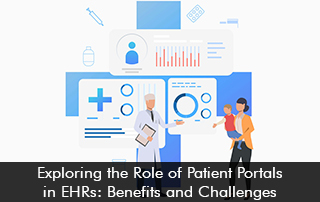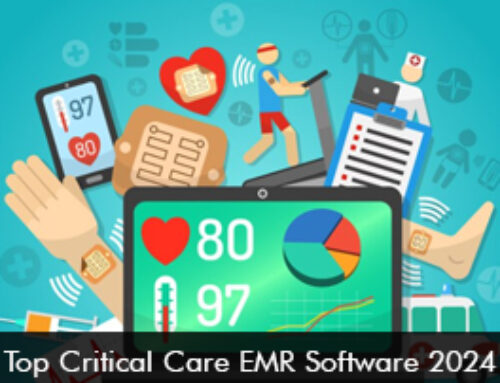Electronic Health Records (EHRs) have established themselves as a fundamental component of contemporary healthcare procedures as the healthcare sector continues to embrace digital change. Patient portals in EHR systems are essential for empowering people and improving communication between patients and healthcare professionals.
In this blog post, we examine the function of patient portals in EHRs, outlining the advantages they provide and any potential drawbacks.
Benefits of Patient Portals in EHRs:
Access to Personal Health Information:
Patients can securely access their personal health information, such as medical records, lab results, medication information, and immunization records, through patient portals. Patients can access their data whenever they choose, encouraging engagement and participation in their own treatment.
Enhanced Communication and Care Coordination:
Patient portals let patients and healthcare professionals communicate more effectively. People can ask inquiries, make appointments, get prescription refills, and send messages, promoting prompt and practical connections. Patient portals also make it possible for different healthcare providers involved in a patient’s care to share information, which improves care coordination.
Empowerment and Patient Engagement:
Patient portals enable people to actively participate in controlling their health. Patients can track trends, monitor progress, and take part in shared decision-making by having access to their health information. Patient satisfaction and health outcomes improve as involvement levels rise.
Appointment Management and Reminders:
The ability to schedule appointments, check upcoming appointments, and get appointment reminders are frequently included in patient portal services. This feature increases patient attendance and decreases no-shows, which results in improved resource usage and more effective scheduling.
Secure Messaging and Virtual Consultations:
Patients and providers can quietly connect using the secure messaging system provided by patient portals. Without the need for an in-person visit, this feature enables patients to ask questions, voice concerns, and obtain non-urgent medical advice. Patient portals that offer virtual consultations can improve access to care, especially in rural or disadvantaged locations.
Challenges of Patient Portals in EHRs:
Adoption and Accessibility:
It can be difficult to ensure that patient portals are widely used and accessible. Some patients may find it difficult to fully employ these tools due to issues such restricted internet connection, technological difficulties, and differences in digital health literacy.
Data Security and Privacy:
In order to prevent unauthorized access to critical health information, patient portals must maintain high security standards. To protect patient data, healthcare institutions must use encryption, authentication systems, and strict privacy standards.
Usability and User Experience:
Patient portals’ effectiveness may be impacted by how easy they are to use. Creating user-friendly features and designing intuitive interfaces is crucial for promoting patient engagement and lowering frustration levels caused by navigating complicated systems.
Interoperability and Data Integration:
To guarantee accurate and current information, patient portals must easily interact with EHR systems and other healthcare technologies. Patient portals may not be able to fully realize their potential since achieving interoperability between various systems continues to be difficult in the healthcare industry.
Health Equity and Inclusion:
Disparities in access to patient portals and digital health technology must be addressed. It is important to make sure that underserved groups, those with impairments, and people with low health literacy levels all have an equal chance to gain from patient portals.







